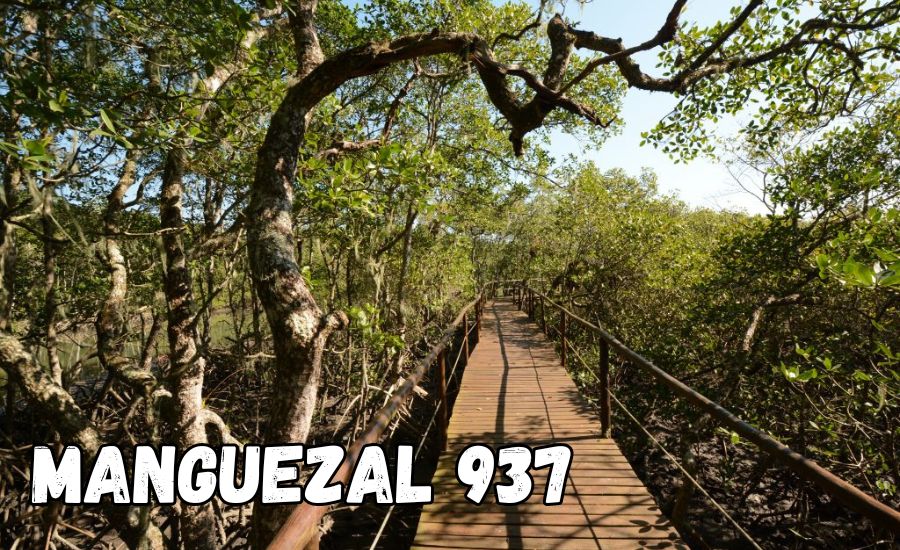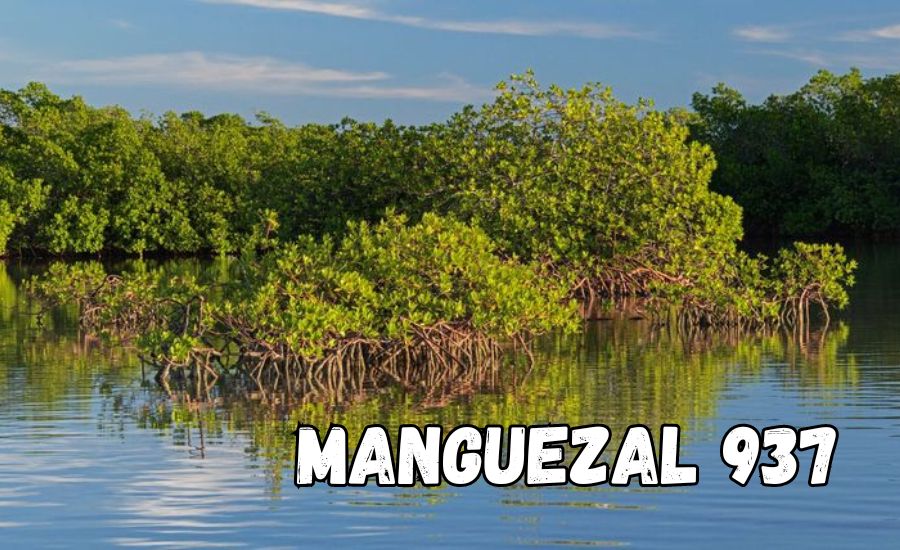Manguezal 937, an expansive mangrove ecosystem located in Brazil, has piqued the curiosity of researchers, environmentalists, and even tourists from around the world. Covering an area of 937 square kilometers, it is known for its unique biodiversity, scientific importance, and mysterious occurrences that have puzzled experts for years. But what makes Manguezal 937 such an intriguing place? The answer lies in its unparalleled ecosystem, filled with rare species, bioluminescent algae, and its role in protecting the environment.
This article delves into every facet of Manguezal 937, from its biological marvels and scientific significance to its role in local culture and environmental protection. As we journey through this mangrove, we will uncover the mysteries, explain the science, and highlight why Manguezal 937 is not just a natural wonder but also a global treasure worth preserving.
The Unique Biodiversity of Manguezal 937
Manguezal 937 is home to a remarkable range of flora and fauna, making it one of the most biodiverse mangrove ecosystems in the world. The mangrove’s intricate root systems and saline environment foster an ideal habitat for various species that thrive in this intertidal zone.
Flora
The three most prominent mangrove species in Manguezal 937 are the red mangrove (Rhizophora mangle), black mangrove (Avicennia germinans), and white mangrove (Laguncularia racemosa). These trees have adapted to the saline environment by developing specialized roots that help them filter out salt and access fresh water. Their dense root systems are not only crucial for the trees’ survival but also play an essential role in stabilizing the coastline and preventing erosion.
Fauna
Manguezal 937 hosts over 200 bird species, including the striking Red Ibis (Eudocimus ruber) and the majestic Great Egret (Ardea alba). These birds find food, shelter, and breeding grounds within the mangroves. The forest is also home to over 50 species of fish, crabs, and shrimp that depend on the mangrove’s brackish waters for reproduction and growth.
One of the most notable inhabitants is the Guiana dolphin (Sotalia guianensis), an endangered species that thrives in the nutrient-rich waters of Manguezal 937. With a population of around 500 dolphins, this mangrove serves as one of the last safe havens for this marine mammal.
The Role of Mangroves in Environmental Stability

Mangroves like Manguezal 937 are often referred to as the “lungs of the coast.” They play a crucial role in maintaining environmental balance and protecting coastal regions from natural disasters.
Coastal Protection
The dense root systems of mangrove trees act as natural barriers against storms, hurricanes, and tidal waves. By absorbing and dissipating wave energy, they reduce the impact of storms on coastal areas, minimizing damage to both human settlements and natural habitats. Additionally, these roots help trap sediment, preventing coastal erosion and maintaining the structure of the shoreline.
Carbon Sequestration
Manguezal 937 also plays a vital role in mitigating climate change through carbon sequestration. Mangroves are known to store up to four times more carbon than tropical rainforests. This carbon, known as “blue carbon,” is stored in the roots and soil, preventing its release into the atmosphere. In fact, Manguezal 937 alone is estimated to sequester millions of tons of carbon dioxide annually, contributing significantly to global efforts to combat climate change.
Cultural and Historical Significance
Beyond its environmental importance, Manguezal 937 holds deep cultural and historical value, particularly for the indigenous communities that have lived in the region for generations. These communities have long relied on the mangrove for food, medicine, and other resources.
Traditional Practices
Local fishermen use traditional fishing techniques passed down through generations, ensuring the sustainability of the ecosystem. Many of these practices are designed to have minimal impact on the environment, such as using specific nets that allow juvenile fish to escape, ensuring the population remains stable.
Medicinal Uses
The indigenous people also use plants from the mangrove for medicinal purposes. The bark of the red mangrove, for example, is used to treat various ailments, from wounds to digestive issues. These traditional uses highlight the deep connection between the local communities and the mangrove, and they underline the importance of preserving this unique ecosystem.
Ongoing Scientific Research and Discoveries
Manguezal 937 has attracted researchers from around the globe, drawn by its unique features and untapped potential for scientific discovery. The ecosystem serves as a living laboratory for studying mangrove dynamics, climate change, and new species.
Recent Discoveries
Recent studies in the mangrove have revealed the presence of previously unidentified species of algae, fungi, and microorganisms. These discoveries have shed light on the complex nutrient cycling processes that occur within the mangrove, processes that are vital for the health of the entire ecosystem. Researchers are also studying how these microorganisms contribute to the breakdown of organic matter, which in turn enriches the soil and supports the diverse plant and animal life within the mangrove.
The Future of Research
As technology advances, researchers are increasingly using drones and satellite imagery to monitor changes in Manguezal 937. These tools allow scientists to track the effects of climate change on the mangrove, including rising sea levels and temperature fluctuations. By understanding these changes, researchers can develop strategies to protect not only Manguezal 937 but mangroves worldwide.
Threats to Manguezal 937 and Conservation Efforts
Despite its importance, Manguezal 937 is under constant threat from human activities such as deforestation, pollution, and urbanization. These threats jeopardize the delicate balance of the ecosystem and could have devastating consequences if not addressed.
Deforestation and Urbanization
In recent years, areas surrounding Manguezal 937 have been cleared for agriculture and urban development. This deforestation not only destroys habitat for countless species but also disrupts the natural processes that keep the mangrove healthy. Without the mangrove’s protective barrier, nearby towns and villages become more vulnerable to flooding and storm damage.
Pollution
Pollution is another major threat. Industrial runoff and waste from nearby settlements find their way into the mangrove, contaminating the water and soil. This pollution not only harms the wildlife that depends on the mangrove but also diminishes the mangrove’s ability to filter toxins from the water, further exacerbating the problem.
Conservation Initiatives
Several conservation initiatives have been launched to protect Manguezal 937. These include reforestation projects, where mangrove saplings are planted in degraded areas to restore the ecosystem. Local communities are also being educated on the importance of sustainable practices, and eco-tourism is being promoted as a way to generate income without harming the environment.
International organizations have also taken notice of Manguezal 937’s significance. Global conservation groups are working with Brazilian authorities to ensure that the mangrove remains protected for future generations.
Myth and Mystery: The Unexplained Phenomena in Manguezal 937

One of the most fascinating aspects of Manguezal 937 is the aura of mystery that surrounds it. Over the years, the mangrove has been the site of strange and unexplained phenomena that have captured the imagination of locals and visitors alike.
Bioluminescent Algae
One of the most famous mysteries of Manguezal 937 is the presence of bioluminescent algae. On certain nights, parts of the mangrove glow with an eerie, otherworldly light. While scientists have identified the algae responsible for this phenomenon, they are still studying the exact conditions that cause the bioluminescence to appear. Some locals believe that the glowing algae are a sign of the mangrove’s mystical energy, while others see it as a warning of environmental imbalance.
Disappearance of Travelers
Another mystery that surrounds Manguezal 937 is the occasional disappearance of travelers who venture too far into the mangrove. While these disappearances can likely be explained by the challenging terrain and unpredictable tides, some believe that the mangrove itself plays a role. Legends tell of spirits that guard the mangrove, leading those who disrespect the environment astray, never to return.
Tourism in Manguezal 937: A Delicate Balance
Eco-tourism in Manguezal 937 has grown in recent years, as more people become aware of the mangrove’s unique beauty and importance. However, tourism must be carefully managed to ensure that the ecosystem remains unharmed.
What to Expect
Visitors to Manguezal 937 can explore the mangrove through guided boat tours, where they will have the chance to see the mangrove’s wildlife up close. Birdwatchers will be particularly thrilled by the opportunity to spot rare species like the Red Ibis and the Great Egret. Visitors can also participate in traditional fishing trips with local guides, gaining a firsthand understanding of the sustainable practices that have kept the mangrove thriving for centuries.
Eco-friendly Tourism
To protect Manguezal 937, strict eco-tourism guidelines have been put in place. These include limiting the number of visitors, prohibiting waste disposal in the mangrove, and ensuring that all tours are conducted by certified guides who understand the importance of preserving the ecosystem. By following these guidelines, tourists can enjoy the beauty of Manguezal 937 without causing harm.
The Future of Manguezal 937
The future of Manguezal 937 depends on the actions taken today. If conservation efforts are successful, this unique ecosystem will continue to thrive, providing habitat for countless species and protecting the coastline from natural disasters. However, if human activities continue unchecked, Manguezal 937 could be lost, along with all the benefits it provides.
Technological Advancements
Technology will play a key role in the future of Manguezal 937. Advances in satellite imagery, environmental monitoring, and reforestation techniques will enable scientists and conservationists to track the health of the mangrove more effectively. By using these tools, we can ensure that Manguezal 937 remains a vital part of the global ecosystem.
Conclusion
Manguezal 937 is a marvel of nature, a place where biodiversity, environmental stability, and mystery converge. Its role in carbon sequestration, coastal protection, and scientific research make it an invaluable resource not only for Brazil but for the world. Yet, its future remains uncertain, threatened by deforestation, pollution, and climate change.
As we continue to study and explore this remarkable ecosystem, it is crucial that we also work to protect it. Manguezal 937 holds the secrets of the past and the key to a sustainable future. By safeguarding its natural beauty and biological wealth, we ensure that its wonders will be available for generations to come.
FAQs
Q: What is Manguezal 937?
A: Manguezal 937 is a vast mangrove ecosystem located in Brazil, covering 937 square kilometers. It is known for its rich biodiversity and environmental significance.
Q: Why is Manguezal 937 important for the environment?
A: Manguezal 937 plays a crucial role in coastal protection, carbon sequestration, and supporting a wide variety of plant and animal species.
Q: What species can be found in Manguezal 937?
A: Manguezal 937 is home to over 200 bird species, 50 fish species, and endangered animals like the Guiana dolphin, along with unique mangrove trees.
Q: What threats does Manguezal 937 face?
A: The main threats to Manguezal 937 include deforestation, pollution, urbanization, and climate change, which jeopardize its biodiversity and ecosystem.
Q: Can tourists visit Manguezal 937?
A: Yes, tourists can visit Manguezal 937 through guided eco-tours, which allow visitors to explore the mangrove’s natural beauty while following sustainable practices.
Stay informed with the latest news and updates on Dallasinsiders.com
